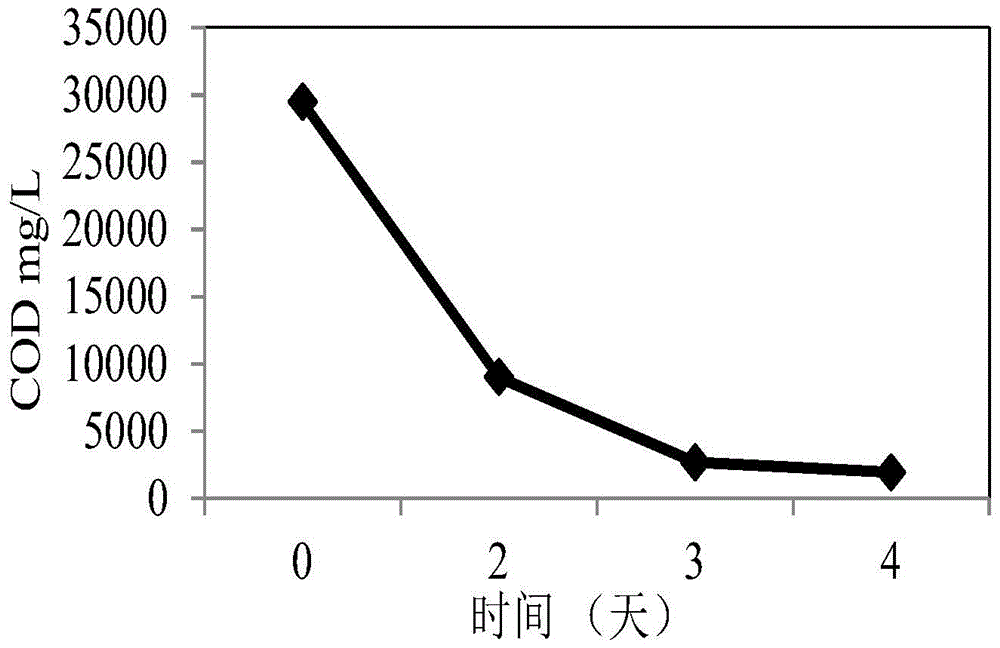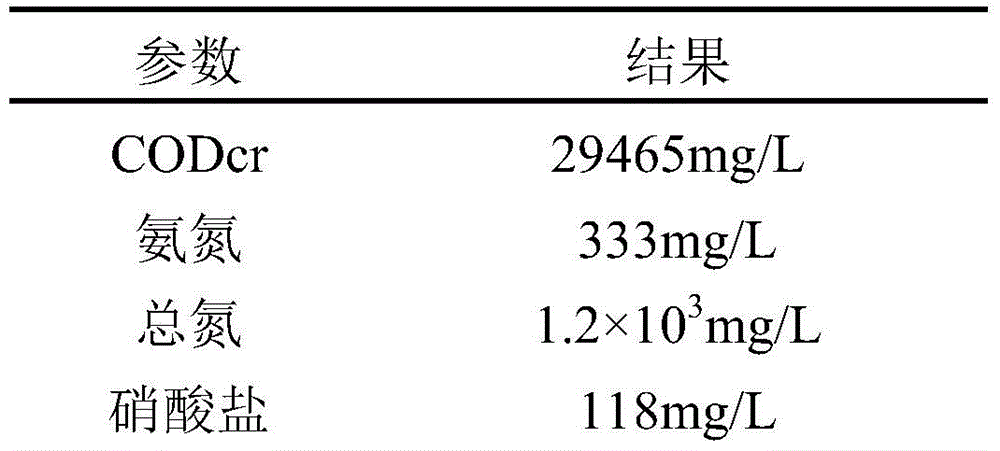A microbial flora for treating high-salt industrial wastewater
A technology for microbial flora and industrial wastewater, applied in food industry wastewater treatment, microorganism-based methods, microorganisms, etc., can solve the problems of no industrialized scale, unstable activity, high fermentation cost, and reduce environmental toxicity and production. Inexpensive and adaptable effects
- Summary
- Abstract
- Description
- Claims
- Application Information
AI Technical Summary
Problems solved by technology
Method used
Image
Examples
Embodiment 1
[0019] Example 1: Identification of community structure for treating high-salt sewage
[0020] The mud and water samples extracted from the wastewater pool of the pickle factory were packed into sterile sampling bags and brought back to the laboratory. Microscopic observation found that the samples had many microbial cells, which were suitable for the isolation and screening of salt-tolerant bacteria. Put the soil sample or water sample into the aerobic aeration reaction tank for continuous cultivation, mix with the pre-prepared inorganic salt medium, aerate for a long time, keep the oxygen content at 8-12mg / L, and cultivate at 30°C , Salt concentration 15% (as NaCl). The composition of the inorganic salt medium is as follows (w / v): potassium nitrate 0.3%, potassium dihydrogen phosphate 0.1%, ammonium dihydrogen phosphate 0.1%, ammonium sulfate 0.1%, pH 7.5, the carbon source in the bacterial flora screening system comes from sewage According to the test results, when the COD...
Embodiment 2
[0022] Example 2: Single bacterium compound flora and activity verification
[0023] According to the active functional flora screened in Example 1, related strains were purchased from China General Microorganism Culture Collection Center (CGMCC). The single bacteria were activated with LB medium, and the LB solid medium was also used for strain antagonism experiments to exclude the antagonized strains and ensure the normal growth of the compound flora. Enterobacter hormaechei (CGMCC 1.10608) isolated from fermented mattress materials, Bacillus megaterium (CGMCC 1.2764) used to treat organic waste, and Chromohalobacter japonicas isolated from pond water were selected respectively. CGMCC 1.9037), Halomonas xianhensis (CGMCC 1.6848) isolated from oil-contaminated soil, Chryseobacterium indoltheticum (CGMCC 1.10984) isolated from sea mud, and Clostridium sporogenes (CGMCC) 1.2157), adjust the cell concentration after activation, simulate the composition ratio of the microbial co...
Embodiment 3
[0024] Example 3 Application of compound active flora in pickling wastewater
[0025]A large amount of salt is added to the pickles during the pickling process, resulting in high salinity in the wastewater generated during the pickling process, generally between 15-20%, and high nitrite, ammonia, nitrogen, and phosphorus substances. If this kind of high-salt, high-nitrogen and phosphorus wastewater is mixed with domestic sewage and discharged into the sewage pipe network, it will seriously affect the stable operation of the sewage treatment system. The water quality of the selected pickling wastewater is turbid, dark brown, with high chroma, COD as high as 29465mg / L, and salinity 18%. The water quality parameters are shown in Table 1.
PUM
| Property | Measurement | Unit |
|---|---|---|
| chemical oxygen demand (mass) | aaaaa | aaaaa |
Abstract
Description
Claims
Application Information
 Login to View More
Login to View More - R&D
- Intellectual Property
- Life Sciences
- Materials
- Tech Scout
- Unparalleled Data Quality
- Higher Quality Content
- 60% Fewer Hallucinations
Browse by: Latest US Patents, China's latest patents, Technical Efficacy Thesaurus, Application Domain, Technology Topic, Popular Technical Reports.
© 2025 PatSnap. All rights reserved.Legal|Privacy policy|Modern Slavery Act Transparency Statement|Sitemap|About US| Contact US: help@patsnap.com



